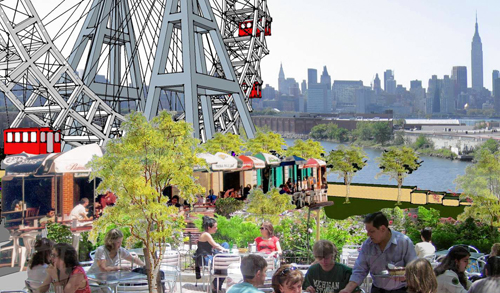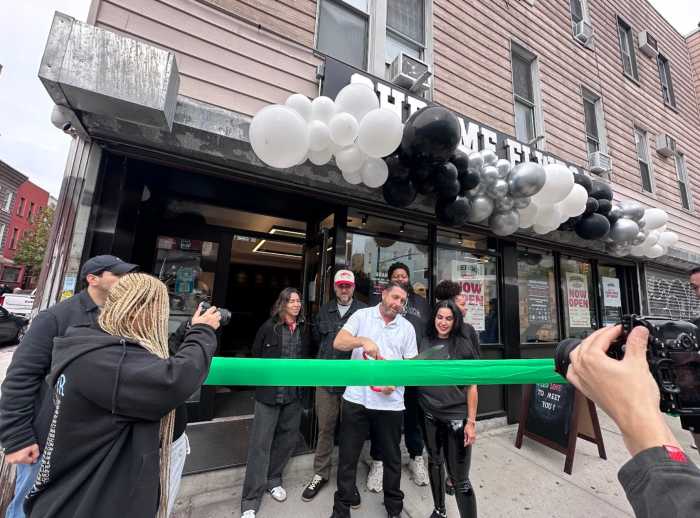Newtown Creek would go from Superfund to super fun if a group of high schoolers have their way.
Twelve students earned praise from design experts across the country for dreaming up a concept for a massive 378-acre waterfront park alongside the putrid sludgeway that would bring foliage, baseball fields, a boardwalk, ziplines, an amphitheater, and the city’s biggest ferris wheel to an area that plays host to one of history’s largest oil spills.
Dubbed “Pippin Park” after George Washington’s favorite apple, the ambitious, but for now not-so-realistic proposal would straddle Brooklyn and Queens and could one day draw visitors to a viaduct slated for a federal Superfund cleanup and a waterfront that many do their best to avoid.
“We’ve never really had a hangout near the creek,” said Taylor Clark, a junior and member of the city’s Architecture Construction Engineering mentoring program, which earned an honorable mention in the Construction Industry Roundtable’s national design competition. “Most of us go to school in the area and it’s so dense that there’s nowhere to go. We thought if we combined the eco-friendly agenda with a recreational space, it would make the most sense.”
The team — which includes students from Brooklyn Technical High School as well as kids from schools in Queens and the Bronx — bested 36 other youth squads thanks in part to its approach, said mentor Miguel Cedeno.
“We asked ourselves, ‘Why would anybody come to this park as opposed to Central Park and all of the neighborhood parks, why would you come here? What would make this place special?’ ” said Cedeno, who works as a program director at the Department of Design and Construction.
That said, making Pippin Park anything more than a pipe dream wouldn’t be cheap. The project would cost $19 million for materials alone — not to mention land acquisition, environmental remediation, labor, and public relations costs, the teens said.
And all of that would come at a time when other parks projects in North Brooklyn — from the sprawling Bushwick Inlet Park to the more modest proposed green space at 65 Commercial St. — have stalled amidst budget problems and bureaucratic red tape.
“We took some liberties to make it happen,” Cedeno said.
But the ambitious youngsters view their plans with unpolluted optimism.
“Even though it would take several years because of the contamination, I could see it in the future,” said Janet Cortes, who joined the program this year. “We decided in the meantime we could throw some distractions in there, camouflage it with an arts park for example.”


























